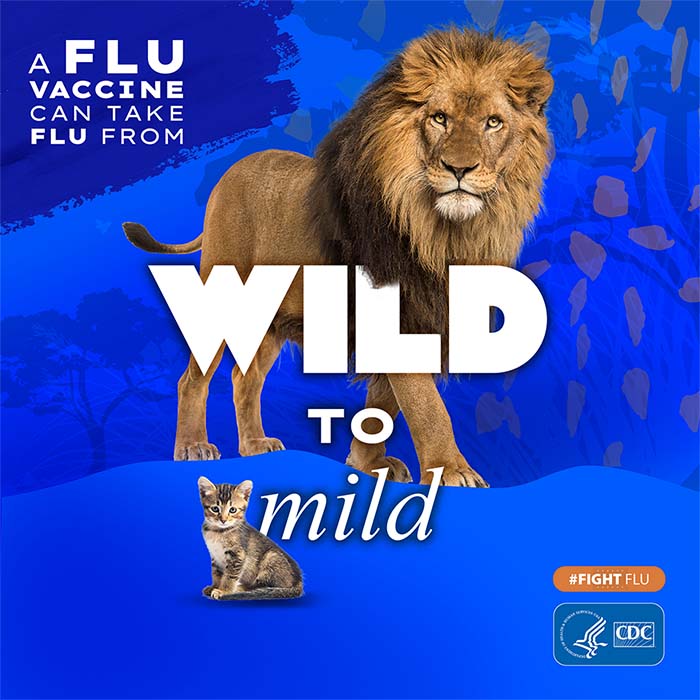CDC Reports on Flu Vaccine Benefits from 2016-2017 Season
April 19, 2018 — Flu vaccination prevented an estimated 5.3 million influenza illnesses, 2.6 million influenza-associated medical visits, and 85,000 influenza-associated hospitalizations during the 2016-2017 influenza season, according to an online CDC report. These findings underscore the important benefits provided by influenza vaccination, which has been recommended annually in the United States for all persons 6 months and older since 2010.
These estimates are derived using a model first published in PLOS ONE in 2010. The model estimates the numbers of flu illnesses, medical visits and hospitalization prevented by vaccination using season-specific data on burden of disease, vaccine coverage and vaccine effectiveness (VE). Variations in these three inputs can impact both the burden of disease and the burden averted by vaccination from season to season. In the United States, overall vaccine uptake has been relatively stable overall at around 47 percent, but there are differences in uptake between different age groups. Younger children and older adults generally have higher vaccine uptake. Overall VE, on the other hand, has varied from 10% to 60% since 2004-2005, when CDC began estimating VE annually. During 2016-2017, overall VE was 40 percent.
The highest estimated number of flu illnesses, medical visits and hospitalizations prevented from vaccination during one season since CDC began making these estimates in 2010 was during the 2013-2014 season, an H1N1-predominant season of moderate severity when vaccine effectiveness was 52%. During 2013-2014, an estimated 6.7 million illnesses, 3.1 million medical visits and 86,700 hospitalizations were prevented through vaccination.
The lowest number of flu illnesses prevented from vaccination during one season was 1.6 million during 2014-2015, the previously noted H3N2-predominant season with VE of 19%. That same season also saw the lowest estimates for averted medical visits at 800,000 visits prevented as a result of vaccination. So even during seasons when vaccine effectiveness is reduced, flu vaccination still provides substantial public health benefit.
The 2016-2017 estimates reflect a 12 percent reduction in the burden of flu-related hospitalizations as a result of vaccination. The number and proportion of flu hospitalizations prevented by vaccination during 2016–2017 varied by age group, due to age-specific differences in influenza burden, vaccine coverage, and vaccine effectiveness. Vaccination prevented the lowest proportion of hospitalizations among adults aged 18 to 49 years, who had the lowest vaccine coverage, and adults 65 years and older, who had higher vaccine coverage but the lowest VE during this past season. Vaccination prevented the greatest proportion of these outcomes among children aged 6 months to 4 years and 5 to 17 years, where the burden of influenza illness and medical visits was high and VE was greatest.
The proportion of flu hospitalizations averted through vaccination since 2010 has ranged from about 8% during 2014-2015 to nearly 23% during 2011-2012. The 2014-2015 season was an H3N2-predominant season (generally associated with greater severity) and there also was a vaccine mismatch that resulted in overall VE of 19%. The severity of that season was high, based on a methodology to classify flu severity introduced in 2017. The 2011-2012 season was a late season with lower levels of influenza-like-illness and a VE of 47%. Higher VE and less flu activity resulted in a greater impact in terms of reduced burden of disease during that season. The reduction in burden of disease during 2016-2017 is similar to what was seen in estimates for the 2012-2013 (11% reduction), when overall VE was 49%.
Influenza places a substantial burden on the health of people in the United States each year. CDC estimates that from 2010-2011 to 2014-2015, influenza resulted in 9.2 million to 35.6 million illnesses, 4.3 million to 16.6 million medical visits, and 140,000 to 710,000 hospitalizations each year. During 2016-2017, CDC estimates that there were 31 million flu illnesses, 15 million flu medical visits and 600,000 flu-associated hospitalizations, figures which are on the high end of the 5-year range. Estimates of flu-related deaths lag because of delays in reporting.
This online report underscores the benefits of the current vaccination program, but also highlights areas where improvements in vaccine uptake and vaccine effectiveness could deliver even greater benefits to the public’s health. For example, increasing vaccination coverage among adults 18 to 64 years would further reduce the burden of influenza, as this age group continues to have the lowest influenza vaccination coverage. If vaccination rates improved to 70 percent for all age groups, another 1.9 million illnesses, 822,000 medical visits, and 17,300 hospitalizations could have been prevented during the 2016-2017 flu season.

